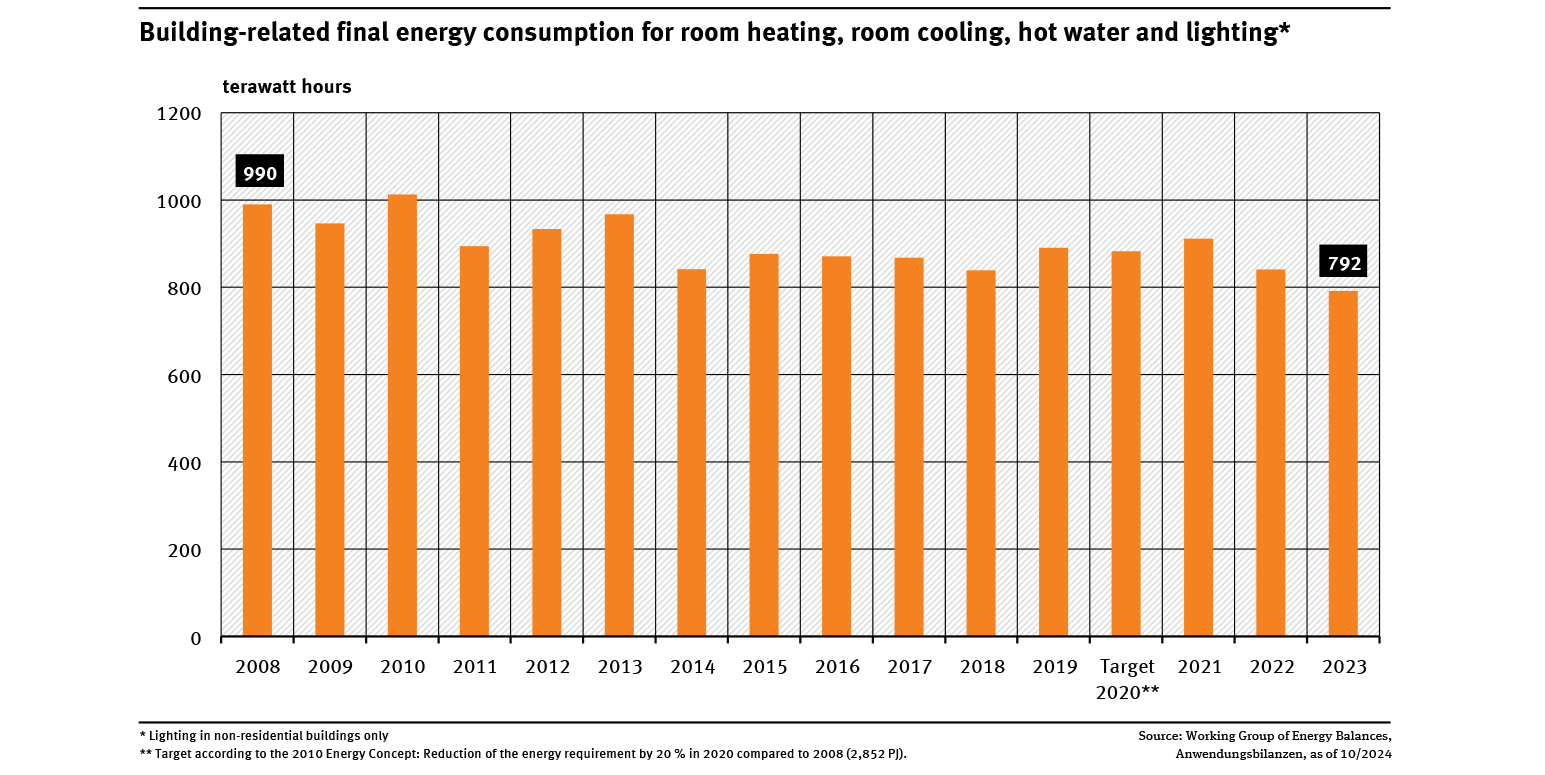Indicator: Energy consumption for buildings

Building-related final energy consumption for room heating, room cooling, hot water and lighting
Quelle: Working Group on Energy Balances


Building-related final energy consumption for room heating, room cooling, hot water and lighting
Quelle: Working Group on Energy Balances
- Final energy consumption associated with buildings decreased by 20.1 % between 2008 and 2023.
- However, according to the 2010 Energy Concept, the heat demand of buildings should have decreased by 20 % between 2008 and 2020. In fact, consumption fell by only 10.9 %.
- Since the Russian war of aggression against Ukraine and the resulting energy-saving efforts, building-related final energy consumption has been declining. Compared to the previous year, it has fallen by 5.8%.
IIn 2023, 25.6% of the total final energy consumption in Germany went into heating in buildings. In addition, nearly 5.1% were used to heat water. By comparison: Building-related heat consumption (space heating and hot water) was thus responsible for 30.7% of total final energy consumption, and the transport sector for around 30.8%. In order to achieve a successful energy transition (‘Energiewende’) we need a heat transition with a radically new approach to heating (‘Wärmewende’).
The indicator is based on one of the quantitative targets of the energy transition programme. It includes consumption for heating and cooling rooms as well as for hot water. For non-residential buildings, permanent lighting is included as well, in line with energy-saving legislation.
The building-related final energy consumption fell by around 20.1 % to 792 Terawatt hours between 2008 and 2023. This is equivalent to 34.9% of the final energy consumption in Germany. Although over the years in question, residential and effective space have increased, energy consumption for room heating decreased. This is mainly the result of higher energy efficiency standards for new buildings and refurbished old buildings. Variation throughout the years is mainly due to differences in weather conditions over the years. The significant reduction in consumption of 5.8% compared to the previous year is primarily due to efforts to save energy as a consequence of the Russian war of aggression against Ukraine.
In its 2010 Energy Concept, the Federal Government set the target of reducing heat requirements in buildings, defined as final energy consumption for heat, by 20 % by 2020. The target was not achieved. Consumption fell by only 10.9 %.
The data required for the calculation of the indicator were provided by Working Group on Energy Balances (AGEB). Within the context of research projects, consumption balances are calculated that reproduce the consumption of final energy in various uses (e.g. heating, mechanical energy etc.). The methodology used has been described in various documents. Figures are taken from the ‘Anwendungsbilanzen (AGEB 2023, in German only).
More detailed information: 'Energieverbrauch für fossile und erneuerbare Wärme' (in German only).